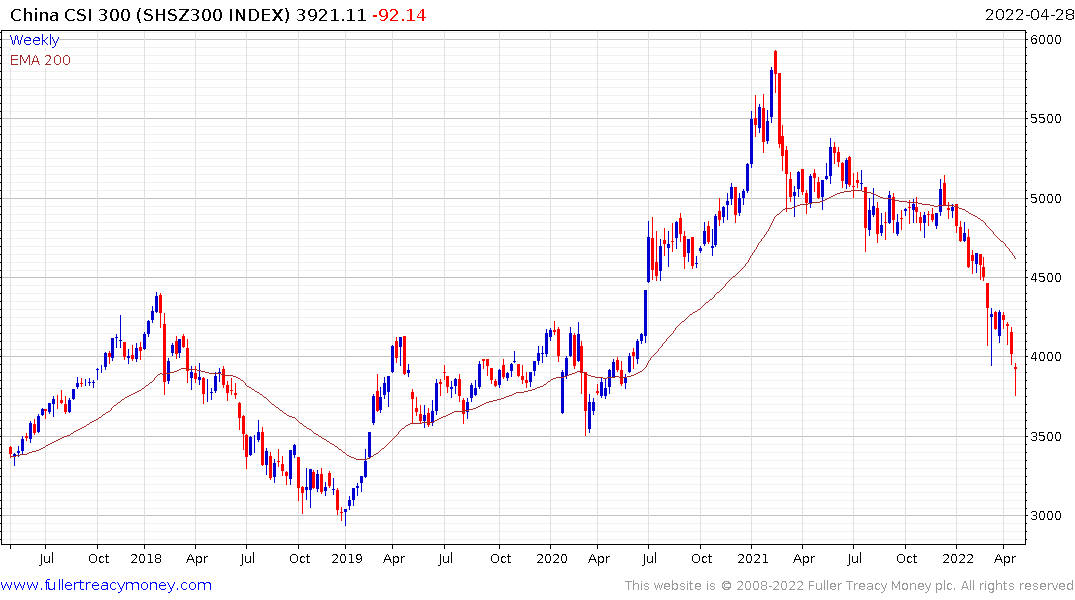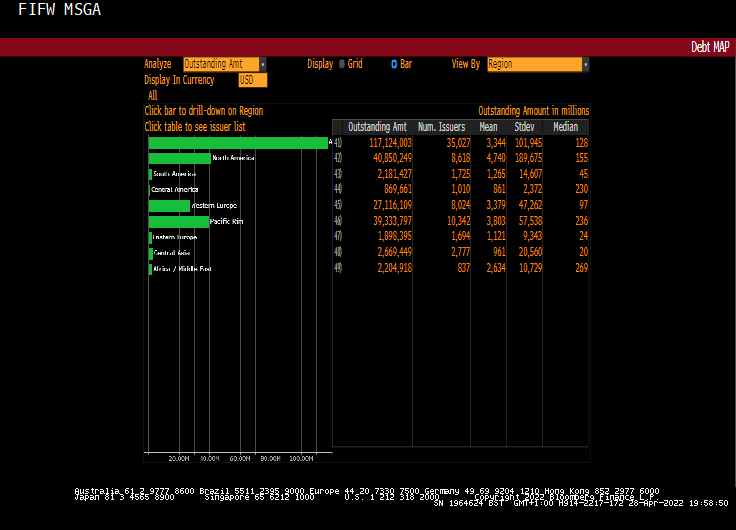Will China lead the world into another 2008 crisis or will they spend their way out of trouble?
Thanks to a subscriber for this article from the Financial Times which may be of interest. Here is a section:
Weijian Shan, whose group PAG manages more than $50bn, said his fund had diversified away from China and was being “extremely careful” about its portfolio in the country.
“We think the Chinese economy at this moment is in the worst shape in the past 30 years,” he said in a video of a meeting viewed by the Financial Times.
“The market sentiment towards Chinese stocks is also at the lowest point in the past 30 years. I also think popular discontent in China is at the highest point in the past 30 years.”
In the video, Shan said that large parts of the Chinese economy, including its financial centre Shanghai, had been “semi-paralysed” by “draconian” zero-Covid policies and that the impact on the economy would be “profound”.
“China feels to us like the US and Europe in 2008,” Shan added. “While we remain long-term confident in China’s growth and market potentials, we are very cautious towards China markets.”
It seems like every central bank is chasing a soft landing. China used the pandemic induced boom in demand for exports to initiate a cleansing of the Augean stables. By clamping down on property development and private equity investment in technology, they hoped to reorient the economy to sectors that would further the dream of becoming a self-reliant global superpower.
China’s belated experience with COVID-19 and the realization it is in no way immune from economic ill effects suggest the government has no choice but to be relent or they will be faced with a hard landing.
 Official pronouncements in support of infrastructure development have been forthcoming this week and the CSI300 followed through today on its upside key day reversal. That suggests a low of at least near-term significance has been reached. Whether it is a medium-term low will depend on government actions following through on promises to provide additional liquidity.
Official pronouncements in support of infrastructure development have been forthcoming this week and the CSI300 followed through today on its upside key day reversal. That suggests a low of at least near-term significance has been reached. Whether it is a medium-term low will depend on government actions following through on promises to provide additional liquidity.
As central banks around the world raise rates and reduced the size of their balance sheets China will need to fend for itself in providing liquidity because export demand growth will be less robust. That is reason enough to continue to devalue the Renminbi.
I was playing around the World Debt Map function on Bloomberg over the weekend. I was trying to get an idea of how much outstanding debt China has. Defaults are a relatively new phenomenon in China and most investors believe the government will have to step in and support failing institutions in much the same way they have refused to allow most of the troubled property developers fail.

Interestingly, both North America and the Pacific Rim have almost same amount of outstanding debt at around $40 trillion.
The USA accounts for most of North America’s debt with at least $22 trillion in Treasuries as well as trillions more in other unfunded liabilities. However, the next biggest issuer is the corporate sector. These issuers having varying degrees of surety of being bailed out by the government in the event of a crisis.
In the Pacific Rim, China is the heavyweight. They have about $3.4 trillion in government debt. However, by my count the various development banks ($3.5 trillion), regional governments ($4 trillion), industrials ($1 trillion) total $8.5 trillion. There is probably another trillion each in power utilities, metals & mining and $2 trillion in bank bonds. China is still a Communist country so it is on the hook for at least $16 trillion in debt and that is a conservative figure.
This should be enough to dispel the notion that China is comparatively unencumbered by debt. The reality is growth has been supported by debt accumulation for a decade. Sustaining the ability to service it even as measures are underway to reduce leverage is a tricky business which make overt measures to support the economy important both for the domestic market and the global economy.
Back to top

